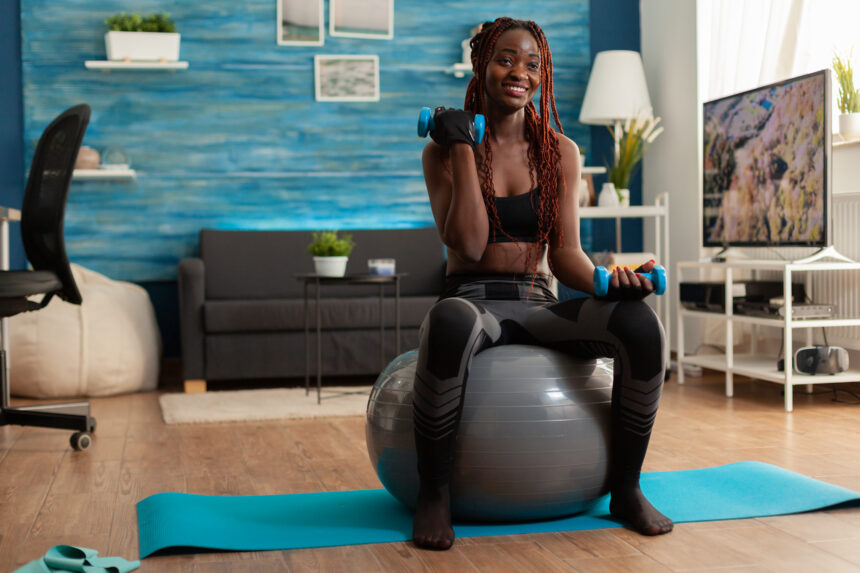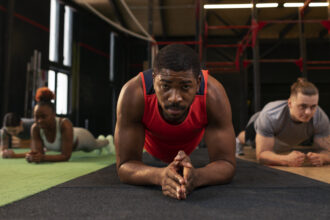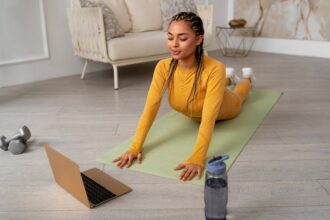In an age where convenience and flexibility are more valuable than ever, home workouts have risen in popularity. Whether you’re short on time, want to avoid expensive gym memberships, or prefer exercising in the comfort of your own space, home workouts provide an effective and customizable way to stay fit. This comprehensive guide covers everything you need to know to start and sustain a successful home workout routine.
Why Choose Home Workouts?
Home workouts offer a level of convenience that traditional gyms simply can’t match. There’s no commuting, no waiting for machines, and no need to adhere to gym hours. You can fit a session into your morning routine, lunch break, or even late at night—whenever it works best for you.
In addition to saving time, home workouts are cost-effective. You don’t need a lot of fancy equipment to get started. Many effective exercises require nothing more than your body weight. Plus, with countless free resources available online, there’s a wealth of training programs and routines at your fingertips.
Getting Started: Setting Up Your Home Workout Space
You don’t need a large area to get moving. A small, clean, and quiet corner of your living room, bedroom, or even your backyard can become your fitness haven. The key is to choose a space with minimal distractions and enough room to move freely.
Invest in a few essential items to make your workouts more effective and comfortable. A yoga mat, resistance bands, dumbbells, and a jump rope are great starter tools. As you progress, you might add a stability ball, kettlebell, or adjustable bench. Keep your gear organized and within reach to make it easier to commit to daily workouts.
Essential Warm-Up and Cool-Down Routines
Warming up before each session is crucial for preparing your muscles and reducing the risk of injury. Start with light cardio, such as jogging in place or jumping jacks, followed by dynamic stretches that target the muscles you plan to use.
Equally important is cooling down after your workout. This helps your body transition back to a resting state, reduces muscle soreness, and enhances recovery. Gentle stretching, deep breathing, and foam rolling can all be part of your cool-down routine.
Beginner-Friendly Home Workouts
If you’re new to fitness or getting back into it after a break, begin with simple bodyweight exercises. These workouts build foundational strength and boost endurance without overwhelming your body.
Basic moves like squats, lunges, push-ups, planks, and glute bridges are excellent for beginners. You can perform these in circuits, completing one set of each exercise before repeating the cycle. Start with 2-3 circuits and gradually increase intensity as you build strength and confidence.
Intermediate Home Workout Routines
Once you’ve mastered the basics, it’s time to step up your game. Intermediate routines can include more complex movements and higher intensity levels. Add in exercises like burpees, mountain climbers, jump squats, and bicycle crunches to elevate your heart rate and challenge your muscles.
At this stage, using light weights or resistance bands can help enhance your strength training. Focus on compound movements that target multiple muscle groups simultaneously for more efficient workouts. Split routines—working different body parts on different days—can also be incorporated for better structure.
Advanced Home Workouts for Maximum Results
For those looking to push their limits, advanced home workouts offer a high-intensity challenge that can rival any gym session. Incorporate HIIT (high-intensity interval training), plyometrics, and progressive overload techniques to continue building muscle and burning fat.
Try exercises like jump lunges, single-leg squats, handstand push-ups, or weighted circuits. Time-based intervals, such as Tabata (20 seconds on, 10 seconds off), are highly effective at this level. Proper form and recovery remain critical, so ensure you listen to your body and rest as needed.
Creating a Balanced Home Workout Plan
A well-rounded fitness routine should include strength training, cardio, flexibility, and recovery. Aim for at least three strength-focused sessions and two cardio workouts each week, interspersed with stretching or yoga days.
Design your weekly plan based on your goals—weight loss, muscle gain, endurance, or general fitness. Track your progress using a journal or fitness app, and make adjustments based on results and how your body feels.
Staying Motivated with Home Workouts
Sticking to a home workout routine requires discipline, but there are several strategies to keep yourself motivated. Set clear, achievable goals and celebrate milestones along the way. Scheduling your workouts just like any important appointment increases consistency.
Mix things up by trying new routines, following different online trainers, or joining virtual fitness communities. Music, podcasts, or even rewarding yourself after a great session can also make workouts more enjoyable. Remember, consistency is key, and even short daily sessions can lead to lasting results.
Nutrition Tips to Support Your Home Workouts
Exercise is only part of the equation—nutrition plays a vital role in achieving fitness goals. Ensure you’re consuming a balanced diet rich in lean proteins, whole grains, healthy fats, and plenty of fruits and vegetables.
Stay hydrated, and time your meals around your workouts for optimal energy and recovery. Pre-workout snacks like a banana or yogurt can fuel your session, while post-workout meals with protein and carbs aid muscle repair. Avoid processed foods and sugary drinks that can undermine your hard work.
Home Workouts for Weight Loss
For those aiming to shed pounds, combining cardio-focused workouts with strength training is ideal. Jump rope, HIIT, dance workouts, and brisk walking or jogging on the spot can significantly boost calorie burn.
Strength training helps build lean muscle, which in turn increases metabolism. Consistency in both workouts and nutrition, along with sufficient rest, forms the foundation of sustainable weight loss at home.
Home Workouts for Muscle Gain
To build muscle without a gym, focus on progressive overload—gradually increasing resistance or volume in your workouts. Bodyweight exercises like push-ups and squats can be intensified with added resistance or variations.
Use resistance bands, weighted backpacks, or homemade weights (like water jugs) to challenge your muscles. Prioritize recovery, sleep, and protein intake to support muscle growth and repair.
Recovery and Rest Days
Your body needs time to recover and rebuild after intense exercise. Incorporate at least one or two rest days each week, or active recovery days with light activities like walking, stretching, or gentle yoga.
Overtraining can lead to fatigue, injuries, and burnout. Listening to your body and respecting its limits is essential for long-term progress and well-being.
Tracking Your Progress
Keeping a record of your workouts, nutrition, and body measurements helps you stay accountable and see tangible results. Use a notebook, spreadsheet, or fitness tracking app to log exercises, reps, sets, and how you feel post-workout.
Take progress photos monthly and monitor changes in endurance, strength, and flexibility. Celebrate achievements, no matter how small—they’re all signs of growth and commitment.
Final Thoughts
Home workouts are an accessible and effective way to stay active and healthy, no matter your lifestyle or fitness level. With dedication, the right strategy, and a supportive routine, you can achieve impressive results without ever stepping foot in a gym.
Whether your goal is to lose weight, gain muscle, improve endurance, or simply feel better each day, home workouts provide the flexibility and tools you need. Embrace the journey, stay consistent, and enjoy the empowering benefits of exercising at home.









